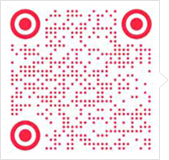
http://www.hteacher.net 2019-12-06 13:17 中国教师资格网 [您的教师考试网]
1. What is missing at the discourse level between the two sentences “Carol loves tomatoes. She was born in Africa”?
A. reference B. cohesion C. coherence D. substitution
2. The synonyms “charge” and “accuse” mainly differ in _______.
A. emotion B. dialect C. formality D. collocation
3. As modern linguistics aims to describe and analyze the language people actually use, and not to lay down rules for “correct” linguistic behavior, it is said to be _______.
A. prescriptive B. psycholinguistic
C. sociolinguistic D. descriptive
4. Which of the following pair of words are antonyms?
A. increase, decrease B. choice; option
C. blue; green D. rabbit; animal
5. Syntax is a branch of linguistics and it mainly studies _______.
A. textual organization B. sentence structures
C. word formation D. language functions
6. Which of the following is a compound word?
A. realize B. everything C. immediate D. company
7. The rhetorical device _______ is a way of speaking or writing that makes something sound better, worse, more exciting, etc. than it really is.
A. hyperbole B. personification C. simile D. metaphor
8. Which of the following pair of words are synonyms?
A. junior; senior B. grateful; thankful
C. plant; tree D. apple; orange
9. The words “dad, papa, father” are examples of _______.
A. dialectal synonyms B. stylistic synonyms
C. emotive synonyms D. collocational synonyms
10. Saussure’s distinction and Chomsky’s are very similar, but they differ in that______.
A. Saussure took a sociological view of language while Chomsky took a psychological point of view.
B. Saussure took a psychological view of language while Chomsky took a sociological point of view.
C. Saussure took a pragmatic view of language while Chomsky took a semantic point of view.
D. Saussure took a structural view of language while Chomsky took a pragmatic point of view.
答案解析
1.C【解析】“Carol爱吃西红柿”和“她生于非洲”这两句话在话语层面缺少什么。B项衔接是指语篇内标记不同句际关系的形式连接,使篇章内的句子扭结在一起的语篇建构手段。C项连贯是指篇章是一个整体而不是一些不相关的词句的堆积。它是语篇中意义的关联,通过逻辑推理来达到语义连接,是语篇的无形网络。本题中“Carol爱吃西红柿”和“她生于非洲”这两句话都是在说明一个人身上的特点,在形式上通过指称she实现了衔接,但前后语义不连贯,无法构成一个有完整语义的语篇或主题,缺少语篇的连贯。A项“所指”;D项“替换”;故选C。
2.D【解析】考查语言学的语义学知识。A项情感;B项方言;C项礼节、形式,多指交际中的正式程度;D项搭配。charge sb. with与accuse sb. of均有“控诉某人”之意,其与名词搭配时介词不同,属于搭配不同的近义词,故选D。
3.D【解析】考查语言学基本概述。规定式(prescriptive)语言说明事情应该如何,而描述性(descriptive)语言描述事情本身是怎样。当代语言学侧重描写分析对语言的实际应用,故选D。
4.A【解析】考查语言学的语义学。题干要求选出反义词(antonyms)。A项increase和decrease分别为增加和减少,属于反义关系;B项choice和option都有“选择”之意,为近义词(synonymy);C项blue和green都是颜色,属于color(上义词:superordinate)的下义词(hyponym),blue和green为彼此的共下义词(co-hyponym);D项rabbit和animal属于上下义关系(hyponymy)。故选A。
5.B【解析】考查语言学。syntax句法学,主要研究句子的内部结构。故选B。
6.B【解析】考查英语构词法。复合词(compound words)是由两个或两个以上的自由词素构成,表达单一的语义概念。以上四个选项中,只有everything是由every和thing两个自由词素构成。故选B。
7.A【解析】考查修辞手法。A项夸张;B项拟人;C项明喻;D项暗喻。夸张是夸大可能性,使一件事听起来更好、更糟或更令人兴奋,故选A。
8.B【解析】考查语义学。A项,junior年少的,senior年老的,互为反义词(antonymy);B项中grateful和thankful意为感谢的,是近义词;C项,plant植物,tree是树,是上下义关系(hyponymy);D项,苹果和橘子,苹果和橘子等构成水果,是水果的下义词。故选B。
9.B【解析】考查语言学的语义学。dad和papa常用于一般场合,比如在交际用语方面;father常用于比较正式的场合或书面语中。所以三者属于文体同义词。故选B。
10.A【解析】考查语言学中的基本概念范畴。索绪尔是从社会语言学出发,而乔姆斯基是从心理语言学出发的。故选A。
文章来源:中国教师资格考试网
责任编辑:张欣
上一篇: 资格证笔试之特殊句式必做30题(3)
下一篇: 教师资格《中学教育知识》模拟试题(4)
公众号

视频号

小红书

小程序

APP

京ICP备16044424号-2京公网安备 11010802023064号 Copyright © 2001-2024 hteacher.net 北京中师华图文化发展有限公司 版权所有